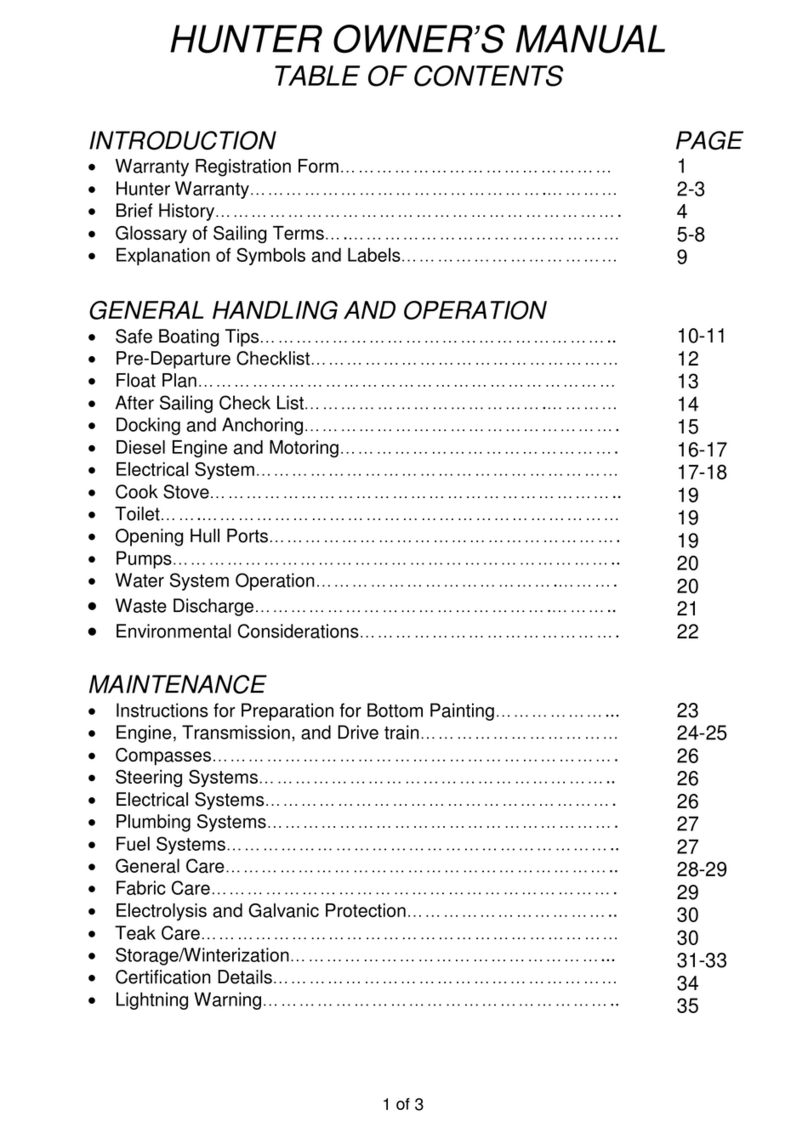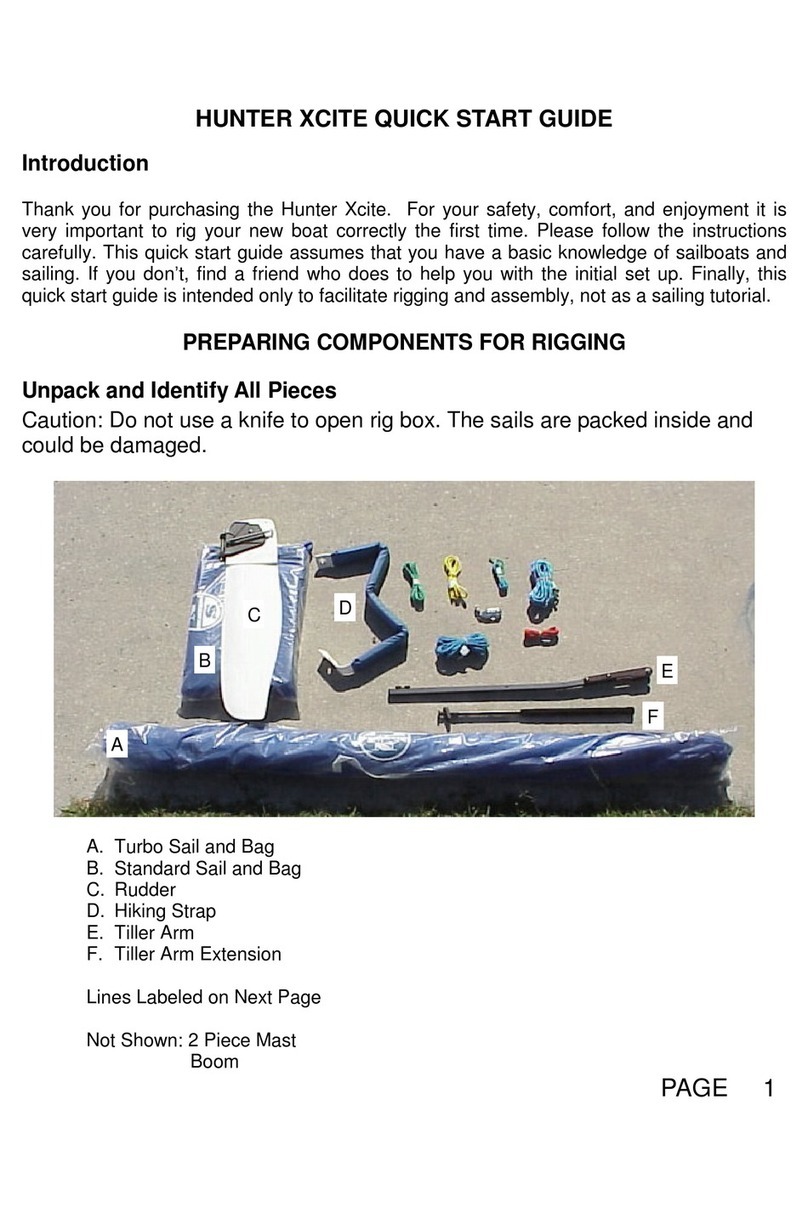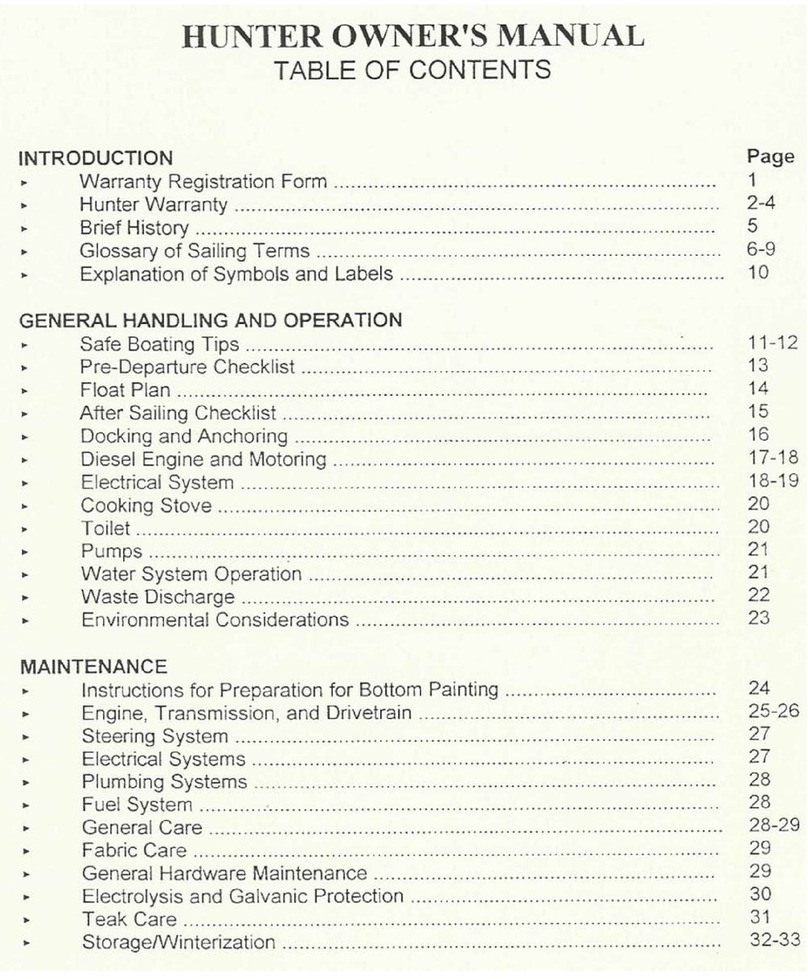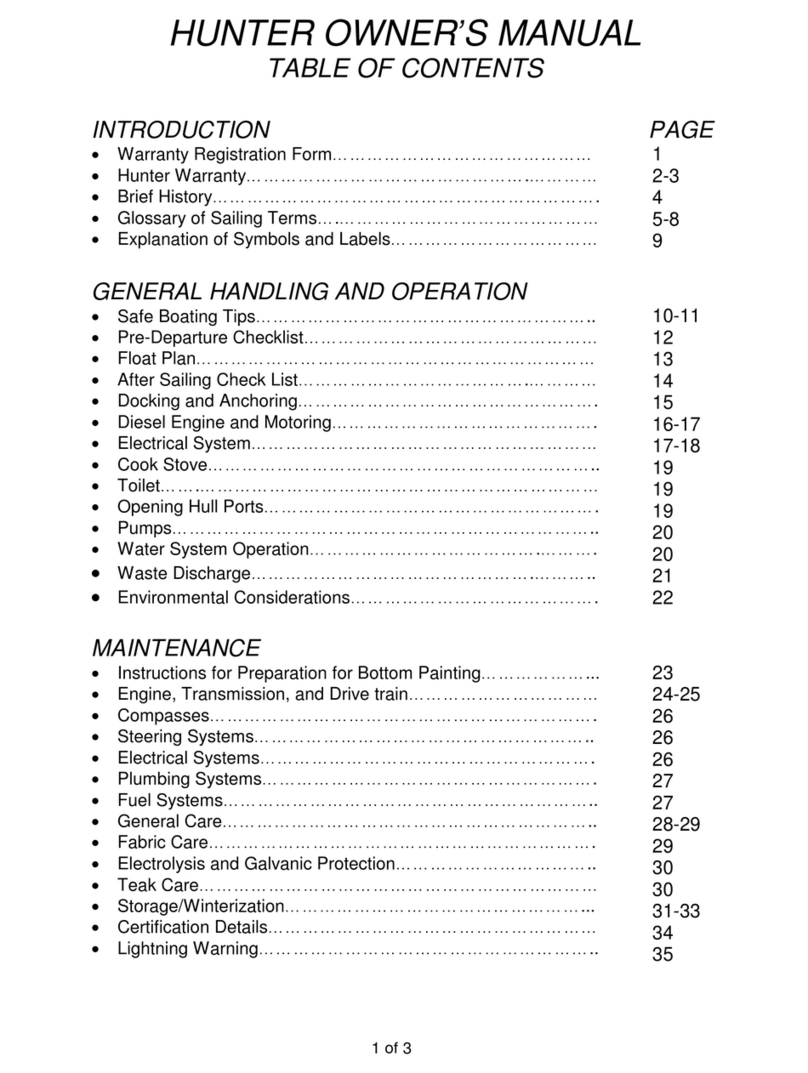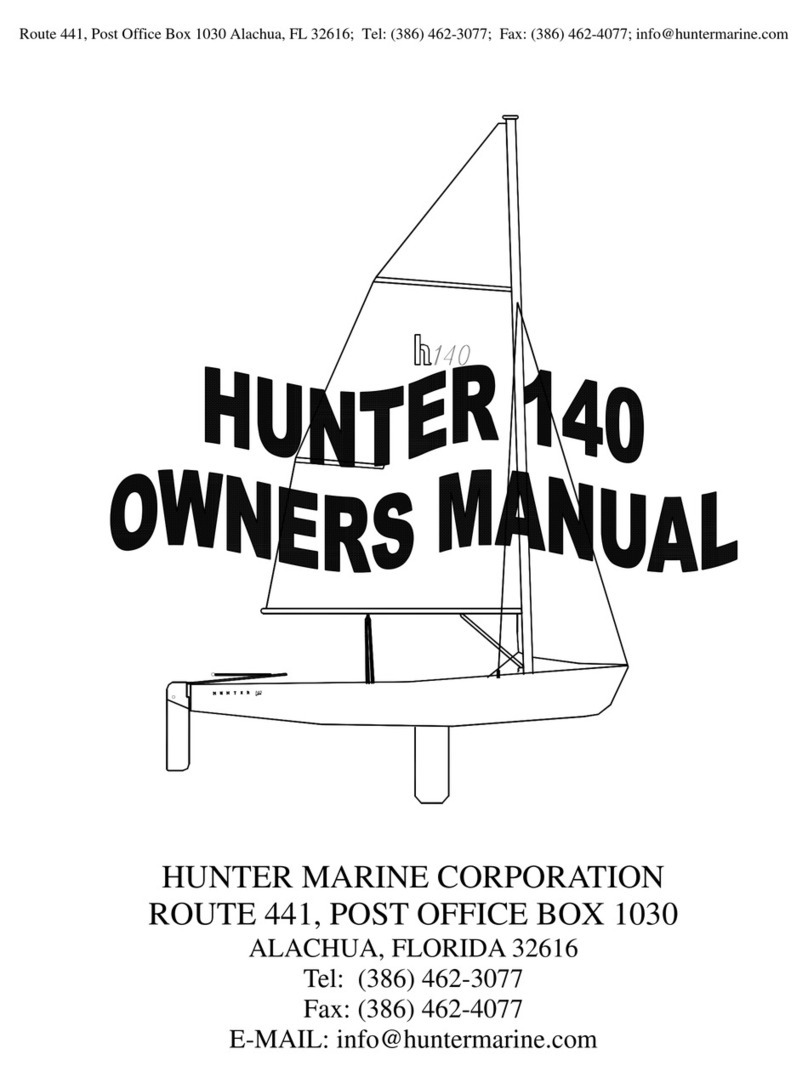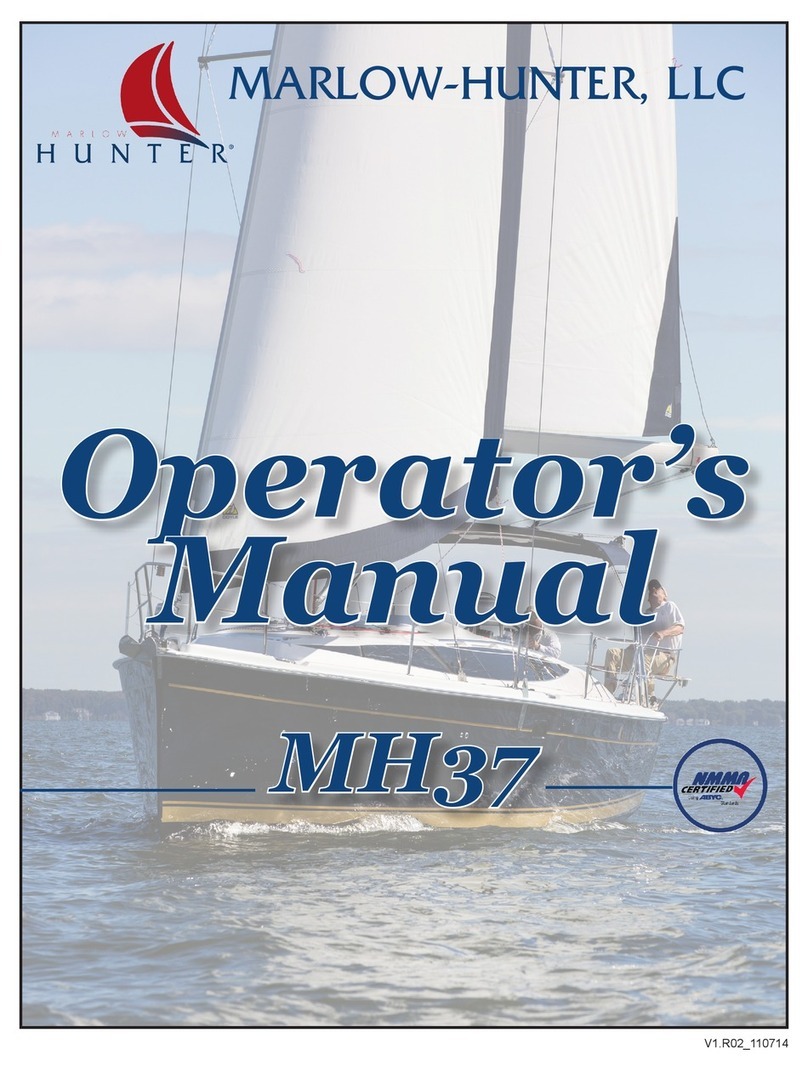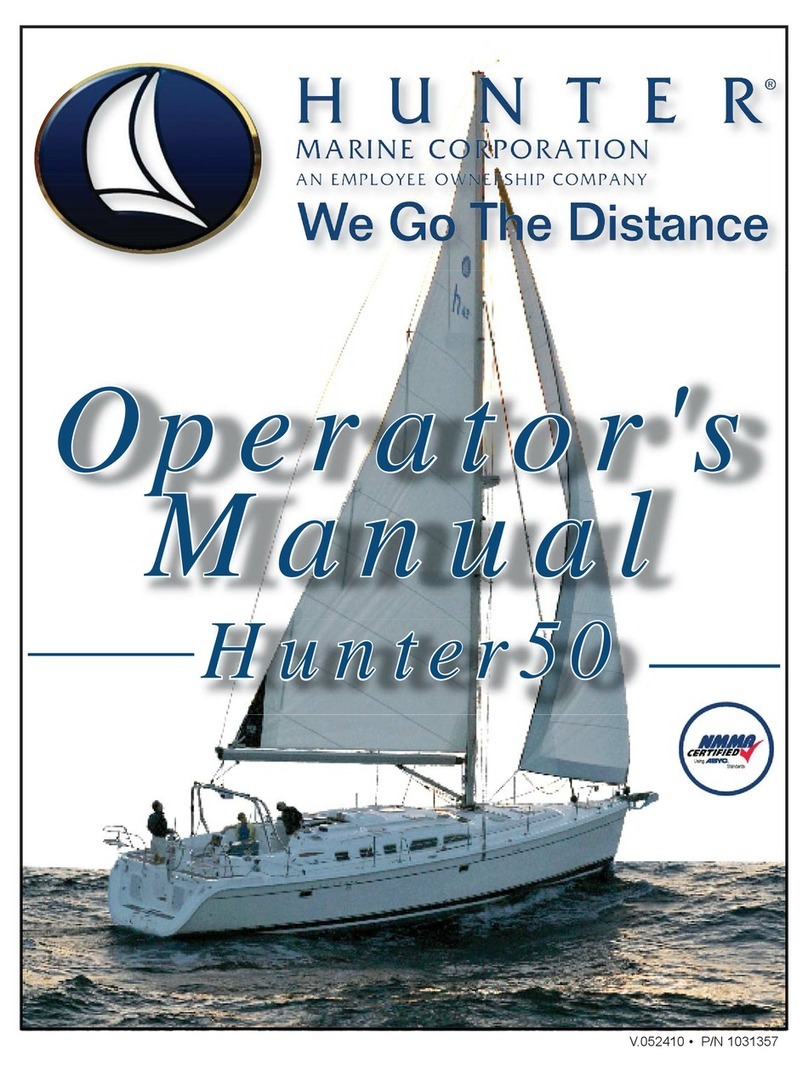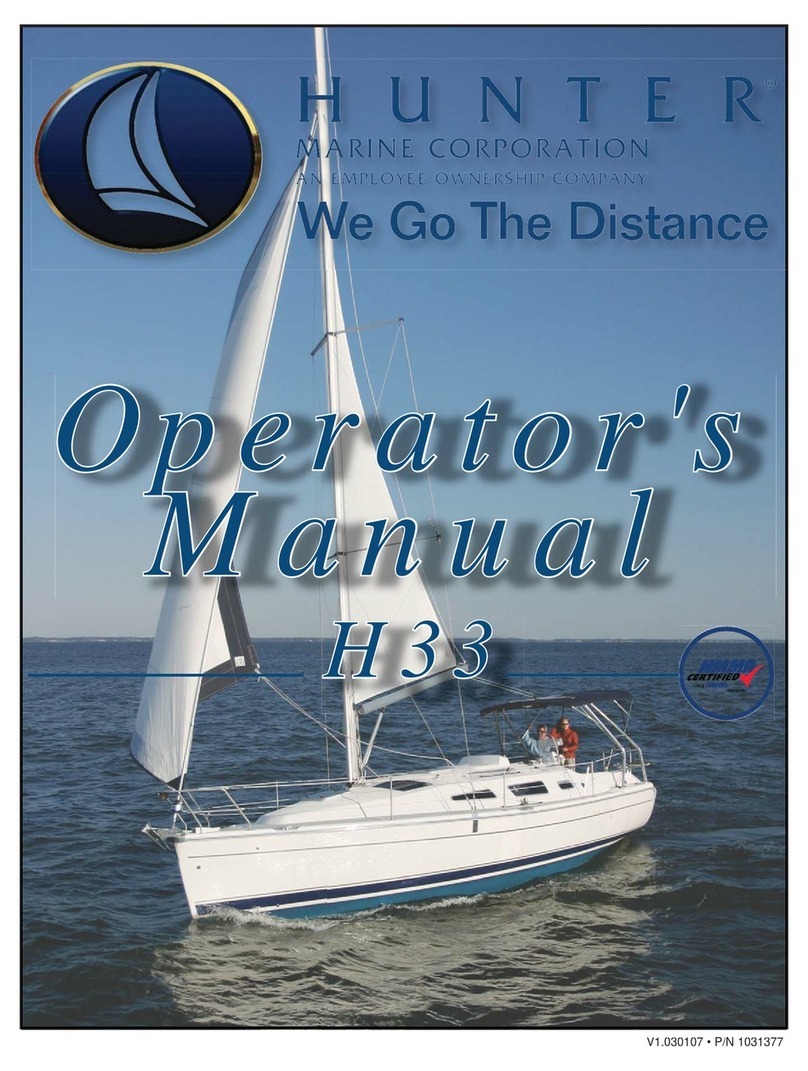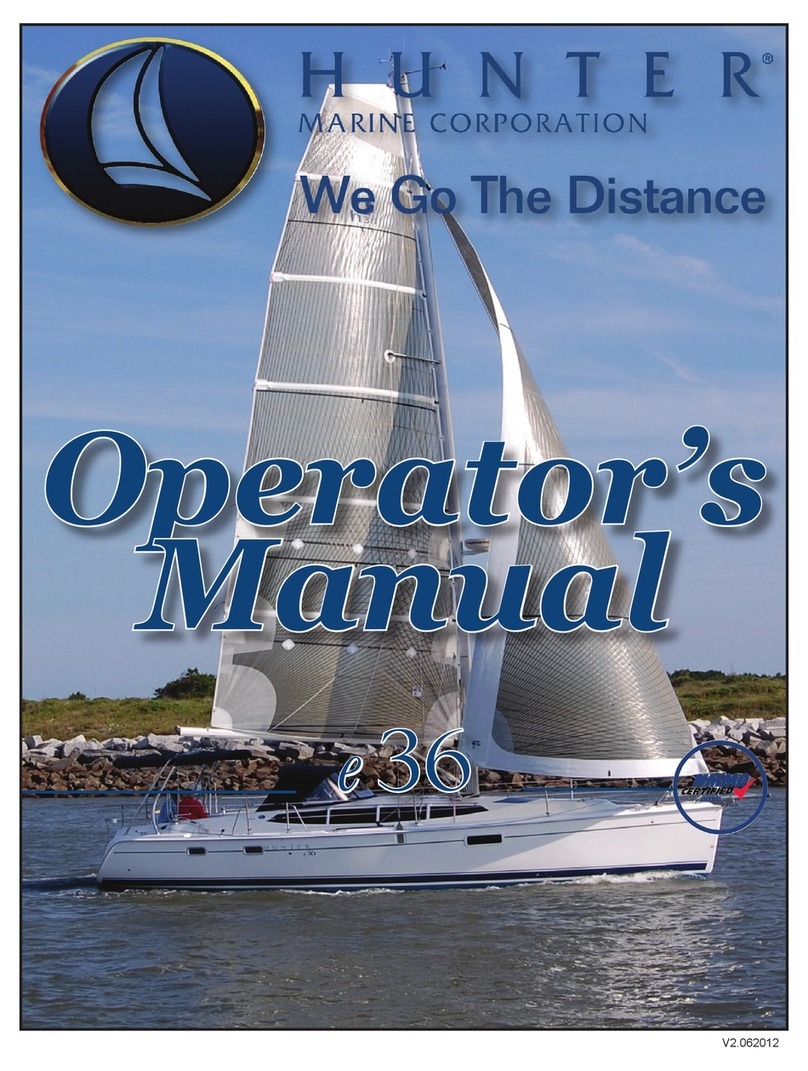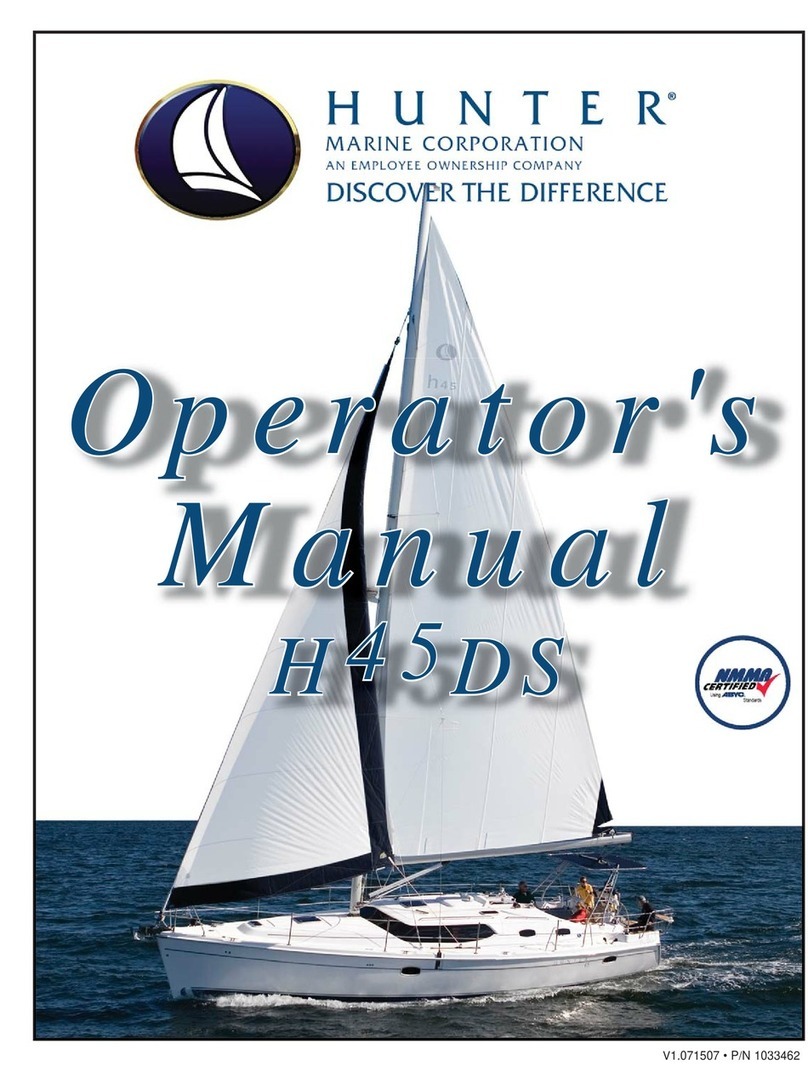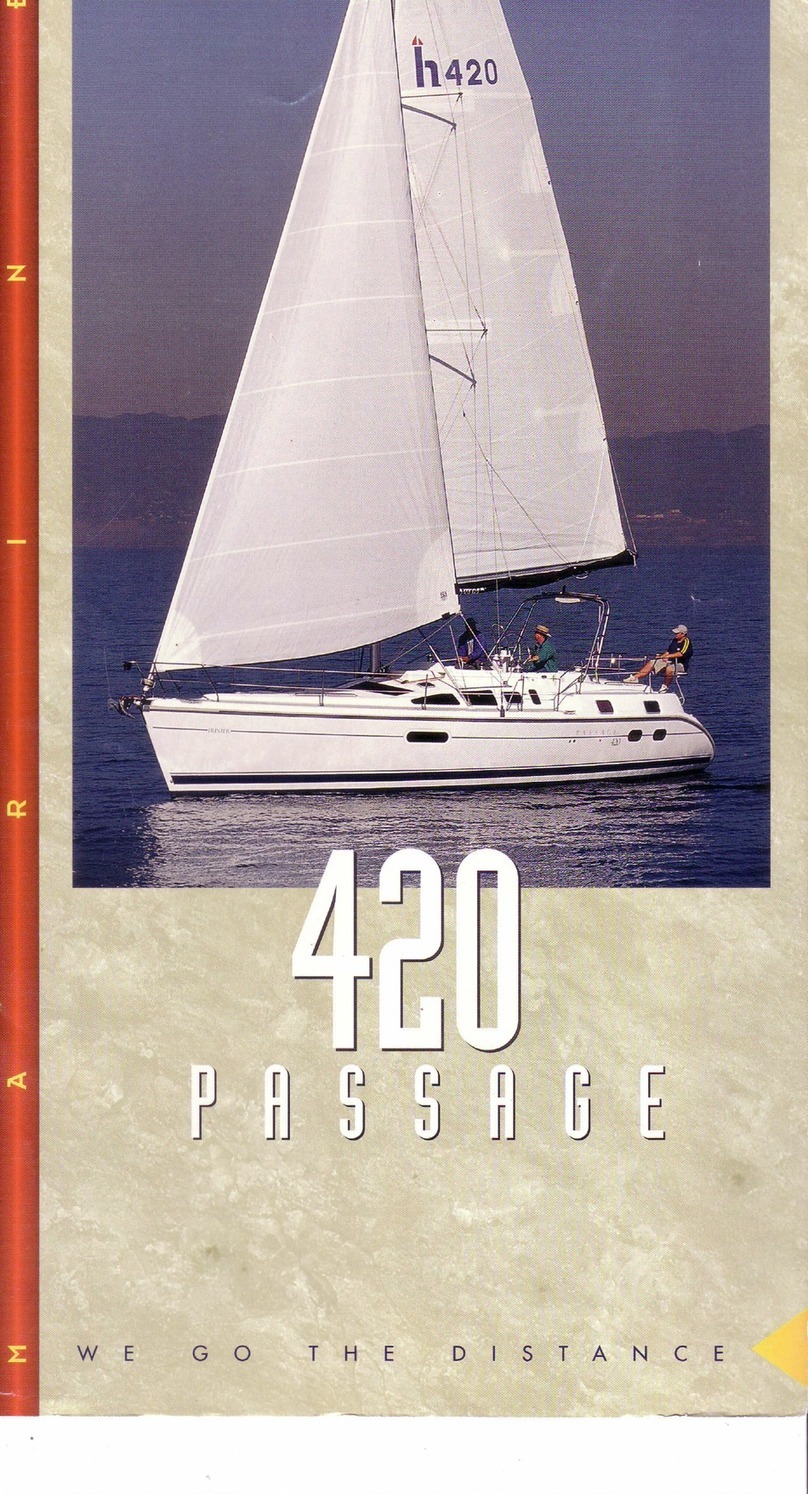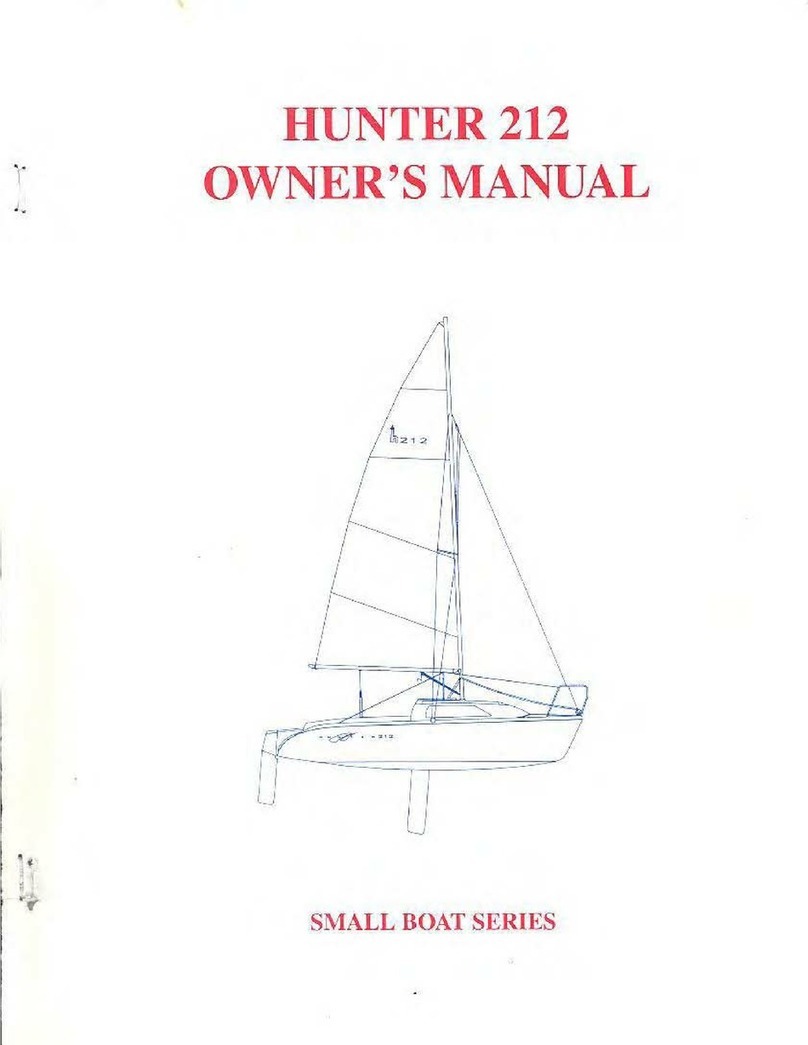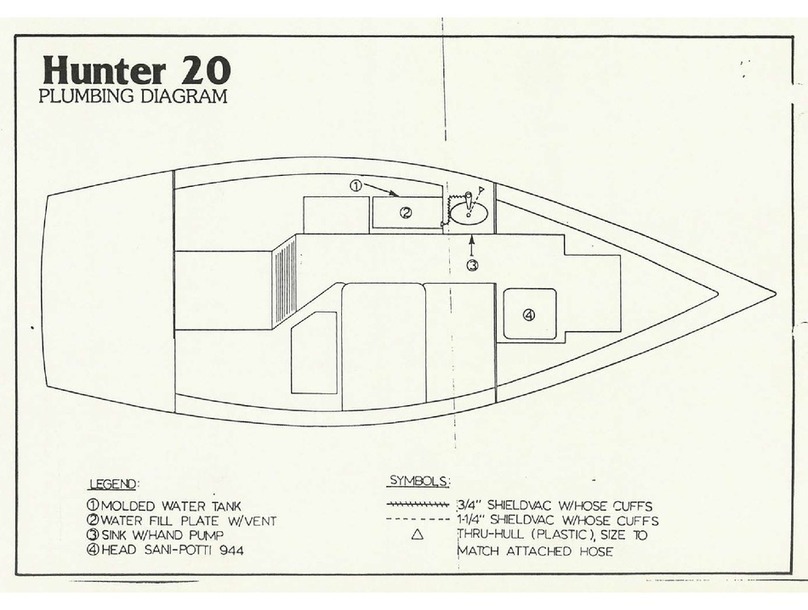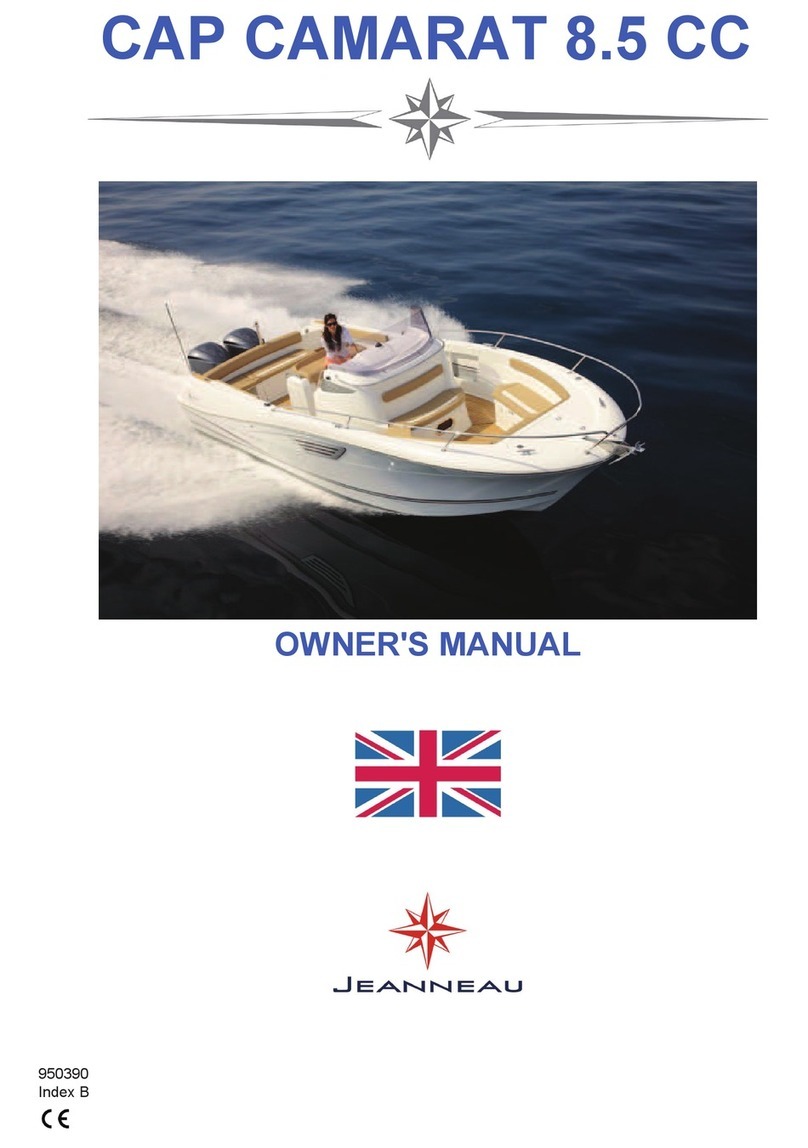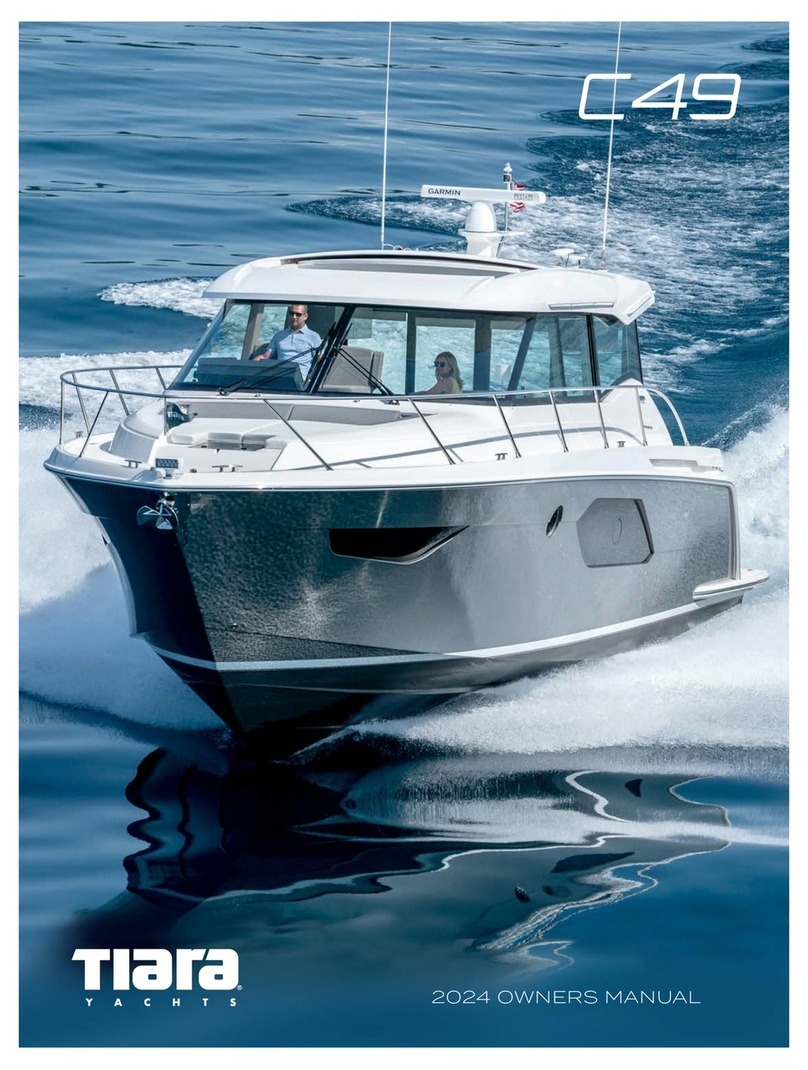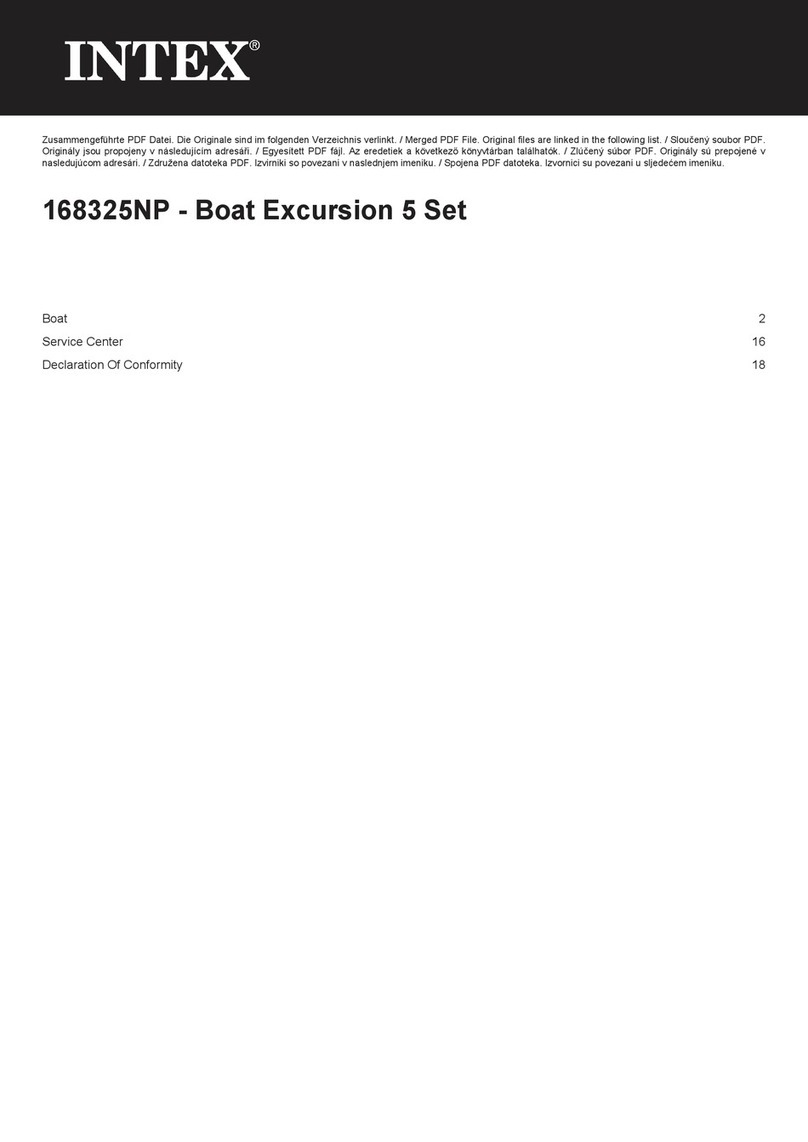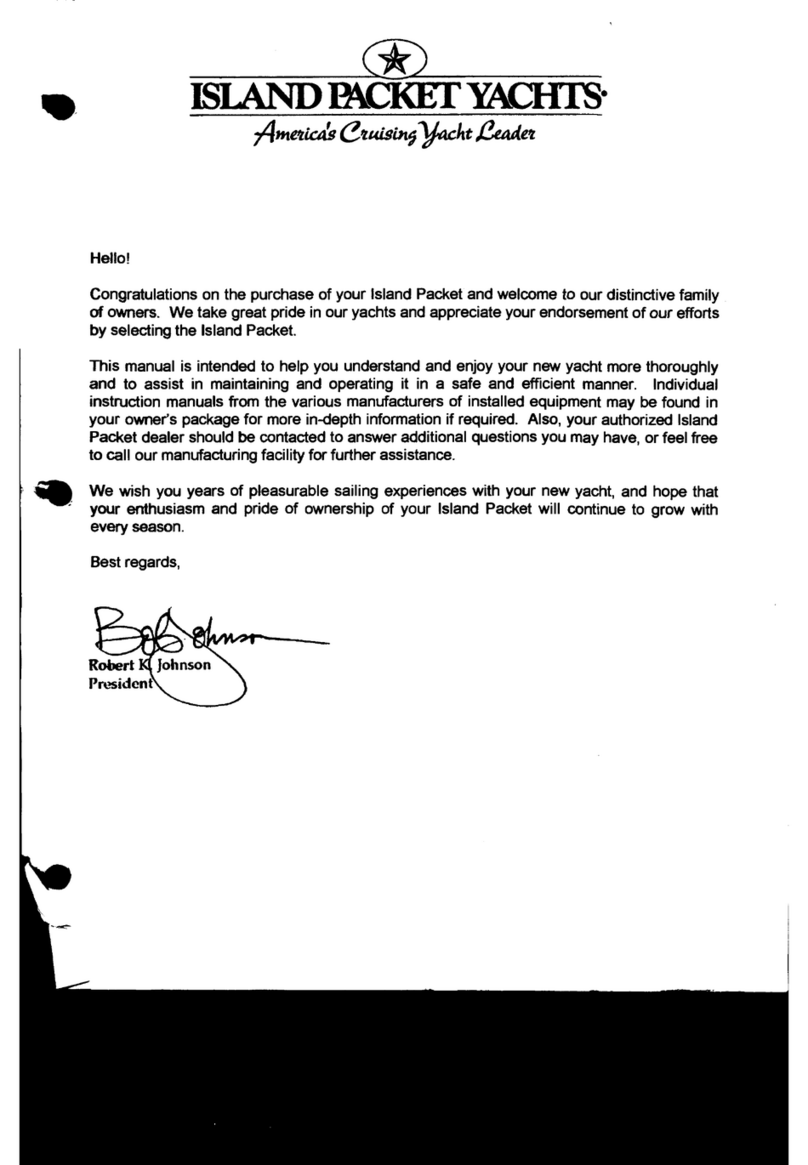
HUNTER
DIESEL ENGINE
An engine owners manual is supplied
with your boat and should be read
thoroughly. The manual contains
technical specifications, running instruc-
tions and maintenance schedule on
lubricants and fluids. For long engine life,
follow routine maintenance schedules.
You should check engine oil,
transmission fluid, and coolant levels.
Water, rust, scale and dirt will cause
serious damage to the injectors on diesel
engines. You should check your filters
frequently and change when necessary.
If you start your engine, run it a
minimum of 15 minutes to bring it up to
operating temperature. This insures that
any condensation is evaporated. Your
engine should "run-out", at 3/4 throttle,
at least once a month to clean out carbon
build up and moisture.
STARTING:
1.
Visually check engine compartment
to see that the throttle linkage, shifting
controls, electrical connections and fuel
lines are properly secured.
2.
BEFORE EACH START check oil
in engine and transmission.
3.
Insure that engine shut-off cable is
properly secured and operating.
4.
Place the shift lever (Fig. la) in the
neutral position.
5.
Move the throttle or "fuel" lever
(Fig. lb) forward to approximately the
half speed position.
6.
Insert the starter key and turn to
the "ON" position.
7.
Press the starter button and hold
until engine starts, then release The buzzer
and/or light should then go off.
8.
Back the throttle off to an idle
position (700-800 rpm) allow cold engine
to warm up a minimum of 5 minutes.
9.
Check to see that the lube oil
pressure warning light and the charge
lamp go off.
If any of the warning lamps do not go
off above 1000 rpm, the engine is
malfunctioning and should be stopped
immediately. Consult your nearest engine
dealer.
NOTE: To stop engine at any time,
pull "fuel" lever all the way aft (Fig. lb).
Before stopping, however, it is a good
idea to idle the engine in neutral for
about 5 minutes, then race it in the full
throttle position for a moment, then
return to idle and stop the engine.
CAUTION: DO NOT TURN SAFETY
MAIN SWITCH TO "OFF' WHILE
ENGINE IS RUNNING. THIS CAN
SERIOUSLY DAMAGE THE ALTER-
NATOR.
MOTORING:
When engine is warm, you may
move the "shift" lever either forward to
go ahead or aft to move in reverse (Fig.
la).
CAUTION: your rigging will conduct
electricity. Always check for overhead
high tension wires before proceeding.
Once clear, you may increase your speed
in a reasonable and safe manner as
desired.
IMPORTANT: do not shift from for-
ward to reverse or back without first
lowering engine rpm.







